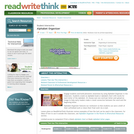
Students use this online tool to create an alphabet chart or pages for an alphabet book.
- Subject:
- Arts and Humanities
- Material Type:
- Activity/Lab
- Interactive
- Provider:
- ReadWriteThink
- Provider Set:
- ReadWriteThink
- Date Added:
- 08/19/2013

Students use this online tool to create an alphabet chart or pages for an alphabet book.
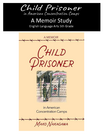
Japanese American Memorial Pilgrimages has developed lessons, supplemental resources, and educational documentary videos to accompany the memoir Child Prisoner in American Concentration Camps by Mako Nakagawa.
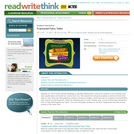
The Fractured Fairy Tale tool encourages students to create their own fractured fairy tales.

In this eight-week module, students learn about new or improved technologies that have been developed to meet societal needs and how those inventions have changed people’s lives. They conduct authentic research to build their own knowledge and teach others through writing. In Unit 1, students read the graphic novel Investigating the Scientific Method with Max Axiom, Super Scientist by Donald B. Lemke as well as several informational articles about inventions that have been developed to meet people’s needs. Students learn about and analyze structures and visual elements authors use to convey complex ideas. Then, they will write a short opinion paragraph about which of the inventions they learned about has been most important to people and why. In Unit 2, students will read The Boy Who Invented TV: The Story of Philo Farnsworth by Kathleen Krull, focusing on how the television was invented to meet societal needs.
Find the rest of the EngageNY ELA resources at https://archive.org/details/engageny-ela-archive .
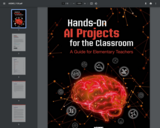
This guide provides student-driven projects that can directly teach subject area standards in tandem with foundational understandings of what AI is, how it works, and how it impacts society.
Instead of simply learning about AI through videos or lectures, the students completing these projects are active participants in their AI exploration. In the process, students work directly with innovative AI technologies, participate in “unplugged” activities that further their understanding of how AI technologies work, and create various authentic products—from presentations to designing an AI robot—to demonstrate their learning.
• Project 1: What AI Does Well and Does Not Do Well
• Project 2: Training Data and Machine Learning
• Project 3: Senses vs. Sensors
• Project 4: Navigation and AI
Visit the ISTE website with all the free practical guides for engaging students in AI creation: https://www.iste.org/areas-of-focus/AI-in-education
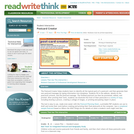
The Postcard Creator helps students learn to identify all the typical parts of a postcard, and then generate their own postcard messages by typing information into letter templates. After printing their texts, students can illustrate the front of their postcards in a variety of ways, including drawing, collage, and stickers.

The interactive Printing Press is designed to assist students in creating newspapers, brochures, and flyers.

SummaryStudents will learn more about hacking and trolling in the online world. They will collaborate and build off others ideas and practice how to respond thoughtfully when creating discussions/posts/ comments. AccommodationsThis activity needs prior background that includes discussions about real news/fake news, what hacking truly means, and acting positive online, and digital literacy. This lesson allows for accommodations to be met through videos (close captioning) and completing commenting (recording it, using images/symbols). Articles/videos can be done together or independently. Images or symbols could be added to enhance learning (http://www.rcsthinkfromthemiddle.com/csi-color-symbol-image.html) Grade Level This lesson is for 5th grade and can be adjusted for younger or older students. Time duration Estimated time: One hour (or over 2 days). Teachers chose if they want to extend this activity. Teachers can divide students into groups & assign one article/video, allow them to decide, or do all based upon preference.Materials neededAccess to computers/tablets (earbuds/headphones) & google drive or other LMS systemPadlet link https://padlet.com/whitmanh1/fjp8ipdt8t6o--create separate padlets (copy/duplicate it) for multiple classesPrint an article or 2 in case the internet acts up, discussion questions posted at each table, examples of comments/responses that show 3 levels (target-exceeds, acceptable-meets, unacceptable- beginning/progressing) and rubric for self assessmentSchedule of Activities & decide on partner work (Table one does assignment #1, table two does #2, table three and four do #3, Table five does #4)

This is a 5th grade writing unit focusing research and informational writing on ugly and weird animals.

Purpose of UnitThe purpose of this Climate Science NTC Project GLAD® unit is a call to action, providing equity of access for all students. Through a model of instruction that promotes language development within core content, the Voices of Hope unit teaches students the science behind climate change and equips them with the tools necessary toward making a positive impact on our planet. This unit was written for 4th - 7th grade.